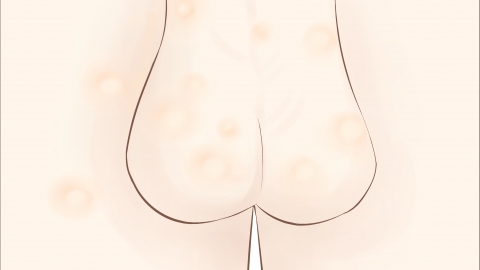What should I do if a carbuncle develops on the testicle?
Normally, the development of scabies on the scrotum may be caused by factors such as poor local hygiene of the scrotum, close contact with individuals who have scabies, simple scabies infection, scabies complicated by eczema, or scabies combined with bacterial infection. It is recommended to seek timely medical attention, identify the underlying cause, and improve the condition under a doctor's guidance through general treatments, medication, and other methods. A detailed analysis is as follows:

1. Poor Local Hygiene of the Scrotum: The skin of the scrotal area contains many folds. If not cleaned properly and in a timely manner, sweat and dirt can accumulate, easily providing a breeding environment for scabies mites and causing scabies, often accompanied by local itching. Wash the scrotum and surrounding areas daily with warm water, dry thoroughly afterward, wear loose and breathable cotton underwear, change underwear frequently, and disinfect it by scalding with boiling water to reduce the possibility of mite infestation.
2. Close Contact with Individuals Who Have Scabies: Direct skin contact with someone who has scabies or using their personal items such as clothing, bedding, or towels can easily transfer scabies mites to the scrotal area and cause infection. Immediately disinfect personal clothing and bedding by boiling. Avoid sharing personal items with others and wash the body promptly after contact with a patient to reduce the risk of infection spread.
3. Simple Scabies Infection: Scabies mites burrow into the stratum corneum of the scrotal skin, creating tunnels that trigger an inflammatory response, causing pale red papules and significant itching at night. Patients should apply topical medications such as sulfur ointment, crotamiton cream, or benzyl benzoate cream as directed by a physician, ensuring coverage of the scrotum and surrounding skin during application.
4. Scabies Complicated by Eczema: Long-term irritation from scabies can damage the skin barrier of the scrotum, triggering eczema with symptoms such as erythema, papules, and slight exudation, along with intensified itching. In addition to using the aforementioned anti-scabies medications, topical corticosteroids such as hydrocortisone butyrate cream, desonide cream, or mometasone furoate gel may be applied under medical guidance to alleviate eczema symptoms.
5. Scabies Combined with Bacterial Infection: Scratching can cause skin damage on the scrotum, allowing bacterial invasion by pathogens such as Staphylococcus aureus and resulting in infection, characterized by pustules, redness, swelling, and pain. Patients should take oral antibiotics such as amoxicillin capsules, cefuroxime axetil tablets, or roxithromycin dispersible tablets as directed by a physician.
In daily life, avoid scratching the scrotal area, keep fingernails trimmed to prevent further skin damage, maintain a light diet avoiding spicy and irritating foods, ensure good ventilation in the living environment, and regularly disinfect bed sheets, pillowcases, and other bedding. Comprehensive care can promote recovery and maintain the health of scrotal skin.




